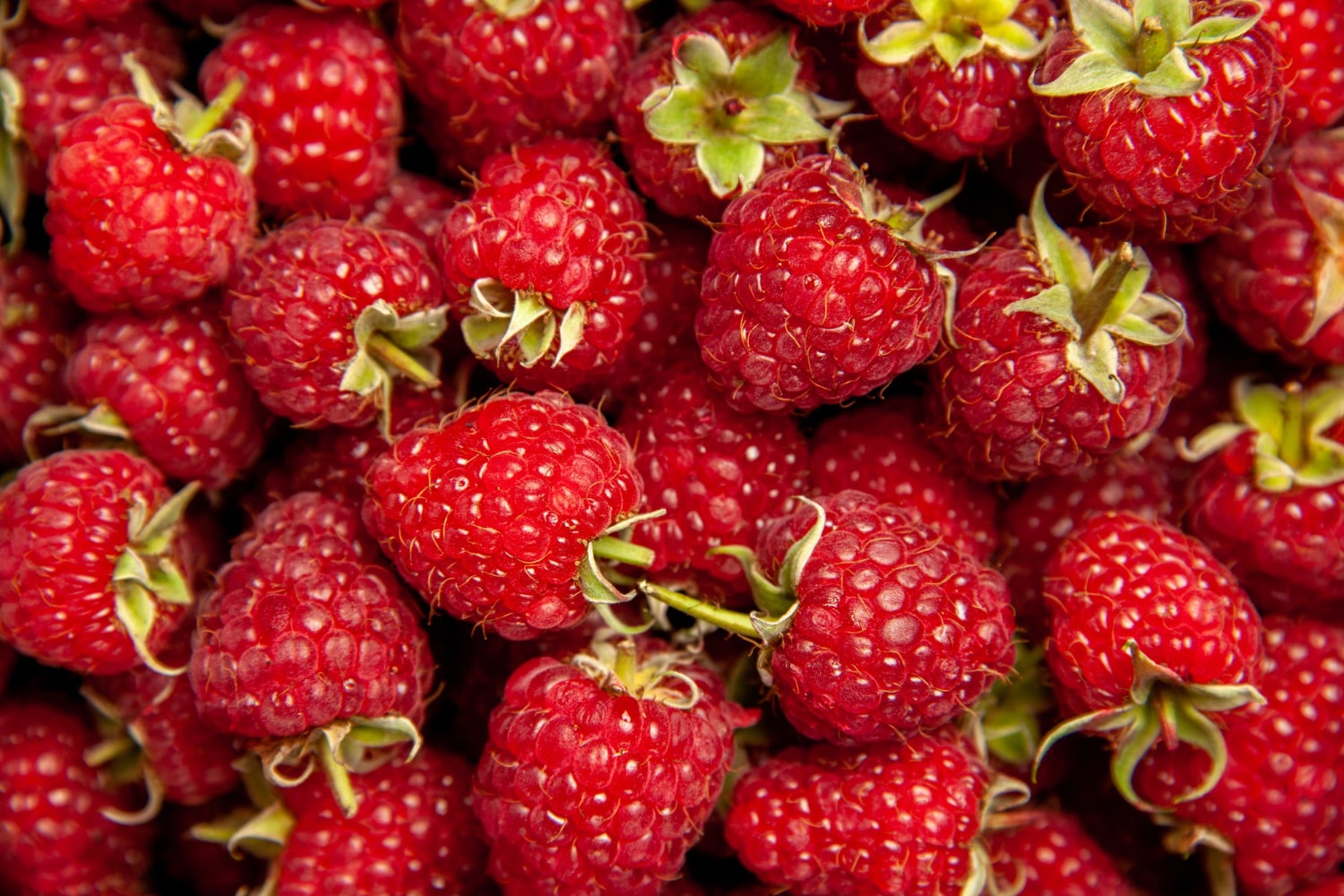Raspberries are among the most beloved fruits in the world, combining pleasant taste, health benefits, and a rich history. They are cultivated in many countries and also collected in the wild, as this plant is widespread across different continents. Known for their medicinal properties, as well as for their use in cooking and cosmetics, raspberries hold a special place in human culture. Interesting facts about raspberries reveal surprising details that you may not know. Below are fascinating insights that allow us to see this plant from a new perspective.
- Raspberries belong to the rose family and are close relatives of roses, apple trees, and pear trees. Raspberry bushes can grow up to two meters tall, forming dense thickets. Their flowers are small and modest, yet they attract many bees.
- The history of raspberry cultivation is very ancient. Archaeologists have found raspberry seeds at Bronze Age human settlements. This proves that raspberries were known and valued thousands of years ago.
- As early as the 4th century BC, ancient Greeks cultivated raspberries. They used them both as food and as a medicinal remedy. Later this tradition spread to Rome and then throughout Europe.
- Raspberry fruits are composed of tiny drupelets clustered together. On average, a single berry may contain from 80 to 120 of these small units. This structure gives raspberries their distinctive grainy texture.
- There are more than 200 species of raspberries. These include both wild and cultivated forms grown in gardens. Different species vary in color, size, and flavor.
- The most common type is red raspberry, but black, yellow, and even purple varieties exist as well. Each variety has its own combination of nutrients and unique taste qualities. This diversity makes raspberries an especially versatile fruit.
- Raspberries are rich in vitamin C, which strengthens the immune system. They also contain B vitamins, potassium, magnesium, and other essential microelements. Their nutritional composition makes them a valuable part of a healthy diet.
- In folk medicine, raspberries have long been used as a natural fever reducer. Tea made from dried berries or leaves helps relieve cold and flu symptoms. Raspberry leaves also have anti-inflammatory properties.
- Fresh raspberries contain high levels of antioxidants. These substances help slow down cell aging and lower the risk of certain chronic diseases. Regular consumption of raspberries benefits both skin health and blood vessels.
- Raspberries have a wide range of culinary uses. They are added to desserts, beverages, sauces, jams, and even meat dishes. They pair especially well with chocolate, cream, and citrus fruits.
- Raspberries are considered a dietary fruit. One hundred grams contain only about 50 calories. This makes them an excellent choice for people who want to maintain a healthy weight.
- Raspberry plants are biennial. In the first year, canes grow, and in the second year, they bear fruit and then die off. This cycle ensures constant renewal of the bush.
- Raspberry roots can produce numerous suckers. Because of this, the plant spreads quickly and can occupy large areas. This quality makes raspberries both valuable and somewhat invasive.
- Raspberry cultivation is economically significant. Leading producers include Russia, Poland, Serbia, and the United States. Every year, hundreds of thousands of tons of raspberries are harvested worldwide.
- There are special remontant varieties of raspberries. They produce fruit several times per year, allowing harvests from summer through autumn. These varieties are especially popular among gardeners and farmers.
- Raspberry seeds contain oil rich in vitamin E. This oil is widely used in cosmetics for creams and skin care products. It helps combat dryness and premature skin aging.
- In many cultures, raspberries symbolize love and passion. Their red color is associated with warmth and life energy. For this reason, they are often mentioned in folk songs and legends.
- Raspberries are an excellent nectar source for bees. Bees collect nectar from raspberry flowers to produce fragrant honey. This honey is valued for its pleasant taste and health benefits.
- In medieval Europe, raspberries were used as a dye. Their juice colored fabrics and even manuscripts. Although the pigment was not long-lasting, it was popular because of its availability.
- Plant breeders continue developing new raspberry varieties. Their goal is to create fruits with higher yields, better flavor, and greater disease resistance. This ensures raspberries remain an important and valuable crop.
Raspberries are fruits that combine taste, health benefits, and cultural significance. Interesting facts about them show how important they are for humans in many aspects of life. Incredible facts reveal their role in medicine, cuisine, and history. You may not know many captivating details, and these are what make raspberries a fruit that will always be cherished around the world.





